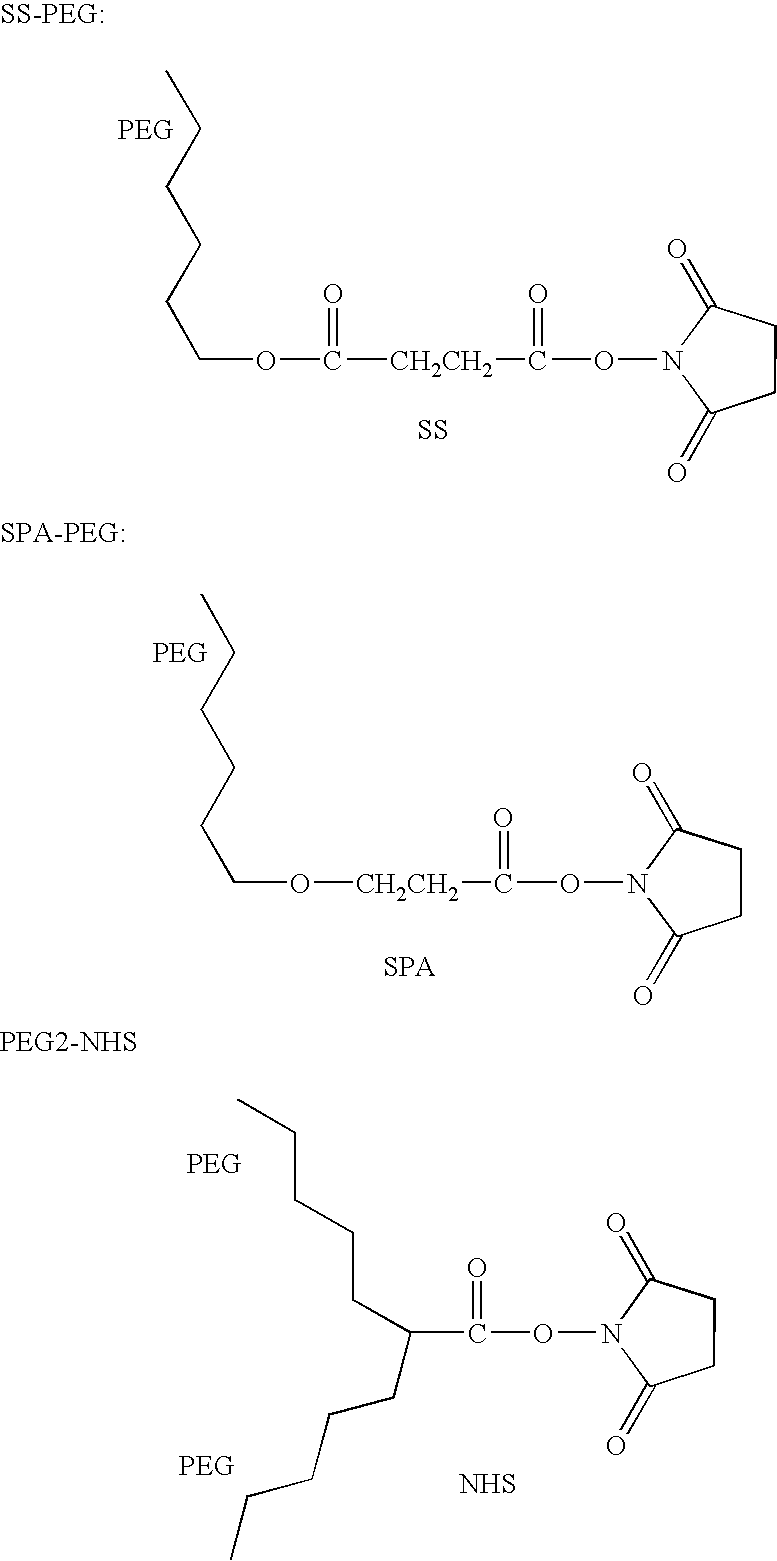Methods for inhibiting viral replication in vivo
a technology of viral replication and inhibition of hepatitis c, which is applied in the direction of antibody medical ingredients, instruments, peptide/protein ingredients, etc., can solve the problems of ineffective hcc treatment, no effective hcc treatment, and no effective immunization currently availabl
- Summary
- Abstract
- Description
- Claims
- Application Information
AI Technical Summary
Problems solved by technology
Method used
Image
Examples
example 1
Production of Recombinant ADI
[0120]Cultures of Mycoplasma arginini (ATCC 23243), Mycoplasma hominis (ATCC 23114) and Mycoplasma arthritidis (ATCC 23192) were obtained from the American Type Culture Collection, Rockville, Md.
[0121]Arginine deiminase was cloned from Mycoplasma arginini, Mycoplasma hominis and Mycoplasma arthritidis and expressed in E. coli as previously described by S. Misawa et al, J. Biotechnology, 36:145–155 (1994), the disclosure of which is hereby incorporated herein by reference in its entirety. Characterization, by methods known to those skilled in the art, of each of the proteins with respect to specific enzyme activity, Km, Vmax and pH optima revealed that they were biochemically indistinguishable from each other. The pH optima was determined using a citrate buffer (pH 5–6.5), a phosphate buffer (pH 6.5–7.5) and a borate buffer (pH 7.5–8.5). The Km and Vmax were determined by incubating the enzyme with various concentrations of arginine and quantifying citrul...
example 2
Renaturation and Purification of Recombinant ADI
[0126]ADI protein was renatured, with minor modifications, as described by Misawa et al, J. Biotechnology, 36:145–155 (1994), the disclosure of which is hereby incorporated herein by reference in its entirety. 100 g of cell paste was resuspended in 800 ml of 10 mM K2PO4 pH 7.0, 1 mM EDTA (buffer 1) and the cells were disrupted by two passes in a Microfluidizer (Microfluidics Corporation, Newton, Mass.). Triton X-100 was added to achieve a final concentration of 4% (v / v). The homogenate was stirred for 30 min at 4° C., then centrifuged for 30 min at 13,000 g. The pellet was collected and resuspended in one liter of buffer 1 containing 0.5% Triton X-100. The solution was diafiltered against 5 volumes of denaturation buffer (50 mM Tris HCl, pH 8.5, 10 mM DTT) using hollow-fiber cartridges with 100 kD retention rating (Microgon Inc., Laguna Hills, Calif.). Guanidine HCl was added to achieve a final concentration of 6 M and the solution was...
example 3
Attachment of PEG to ADI
[0129]PEG was covalently bonded to ADI in a 100 mM phosphate buffer, pH 7.4. Briefly, ADI in phosphate buffer was mixed with a 100 molar excess of PEG. The reaction was stirred at room temperature for 1 hour, then the mixture was extensively dialysed to remove unincorporated PEG.
[0130]A first experiment was performed where the effect of the linking group used in the PEG-ADI compositions was evaluated. PEG10,000 and ADI were covalently bonded via four different linking groups: an ester group or maleimide group, including SS, SSA, SPA and SSPA, where each PEG molecule had an average molecular weight of 5,000, 10,000, 12,000, 20,000, 30,000 and 40,000; an epoxy group, PEG-epoxy, where each PEG molecule had an average molecular weight of 5,000; and a branched PEG group, PEG2-NHS, where each PEG molecule had an average molecular weight of 10,000, 20,000 and 40,000.
[0131]Five IU of the resulting compositions were injected into mice (5 mice in each group). To determ...
PUM
| Property | Measurement | Unit |
|---|---|---|
| pH | aaaaa | aaaaa |
| pH | aaaaa | aaaaa |
| pH | aaaaa | aaaaa |
Abstract
Description
Claims
Application Information
 Login to View More
Login to View More - R&D
- Intellectual Property
- Life Sciences
- Materials
- Tech Scout
- Unparalleled Data Quality
- Higher Quality Content
- 60% Fewer Hallucinations
Browse by: Latest US Patents, China's latest patents, Technical Efficacy Thesaurus, Application Domain, Technology Topic, Popular Technical Reports.
© 2025 PatSnap. All rights reserved.Legal|Privacy policy|Modern Slavery Act Transparency Statement|Sitemap|About US| Contact US: help@patsnap.com

